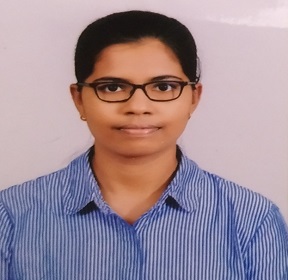
Pavithra Rajam
Saveetha College of Allied Health Sciences IndiaTitle: Atrial septal defect associated with partial anomalous pulmonary vein connection
Abstract:
INTRODUCTION:
Atrial septal defect (ASD) is a form of congenital heart defect that enables blood flow between two ompartments of the heart called the left and right atria. Normally, the right and left atria are separated by a septum called the interatrial septum. If this septum is defective or absent, then oxygen-rich blood can flow directly from the left side of the heart to mix with the oxygen-poor blood in the right side of the heart, or vice versa.Surgical repair of ASD is a well-established procedure and is very safe, with a negligible mortality rate PAPVCs may be isolated or associated with ASDs, and they are a typical component of sinus venosus defects. In PAPVR, an abnormal connection of veins sends blood into other blood vessels and into the upper right heart chamber (right atrium), where it mixes with oxygen-poor blood. As a result, extra oxygen-rich blood flows back to the lungs.
TYPES OF ASD:
- Ostium Secundum - located in the center of the atrial septum
- Ostium Primum - located near the lower portion of the atrial septum, may be associated with defects in the mitral and tricuspid valve
- Sinus Venosus - located near the top of the atrial septum and frequently associated with
- abnormal connection of the right pulmonary vein(s) to the right atrium instead to the left
- atrium
- Patent foramen ovale (PFO) is a hole between the left and right atria (upper chambers) of
- the heart. This hole exists in everyone before birth, but most often closes shortly after being
- born. PFO is what the hole is called when it fails to close naturally after a baby is born.
CASE REPORT:
A 31 year old man who came to the hospital for cardiac evaluation was diagnosed with SVC type ASD and PAPVC. He had a medical history of Hypertension and diabetes mellitus for the past three months . His vital signs were a systemic blood pressure of 110/70 mm Hg ,pulse rate of 88 beats/minute and Respiratory rate of 24 cycles/min.Transesophageal echo was done which showed SVC type ASD (2.6cm).The surgical indication and strategy were admissible.The surgical approach was via median sternotomy . Aorto Bicaval cannulation was established. CPB and Cardiac arrest was applied. Pericardial patch harvested and treated with Glutaraldehyde . Incision made at the level of RA and extended laterally into SVC. Defect was present at SVC level and PAPVC drainage present close to the defect. ASD closer with redirection of PAPVC into LA. SVC augmented with pericardial patch.
ASD CLOSURE AND PULMONARY VEIN RECHANNELING:
The right atrium can be opened longitudinally or transversely and small ASDs or PFOs can be closed by direct suture. Larger defects usually require a patch repair. The traditional approach through a median ternotomy and central cannulation has become exceedingly safe, simple and reproducible.Pulmonary vein Rechanneling ,where pulmonary vein is cross channeled from right atrium to left atrium.Therefore, advancements in this operation have related to surgical access, in an attempt to reduce trauma and hasten recovery.
Biography:
Pavithra Rajam is a student pursuing her bachelor degree in cardiovascular perfusion technology at Saveetha college of Allied Health Sciences, who is interested in academic research activities, attending webinars and exploring knowledge. She relishes the connections found in medicine, how things learned in one area can aid in coming up with a solution in another.
